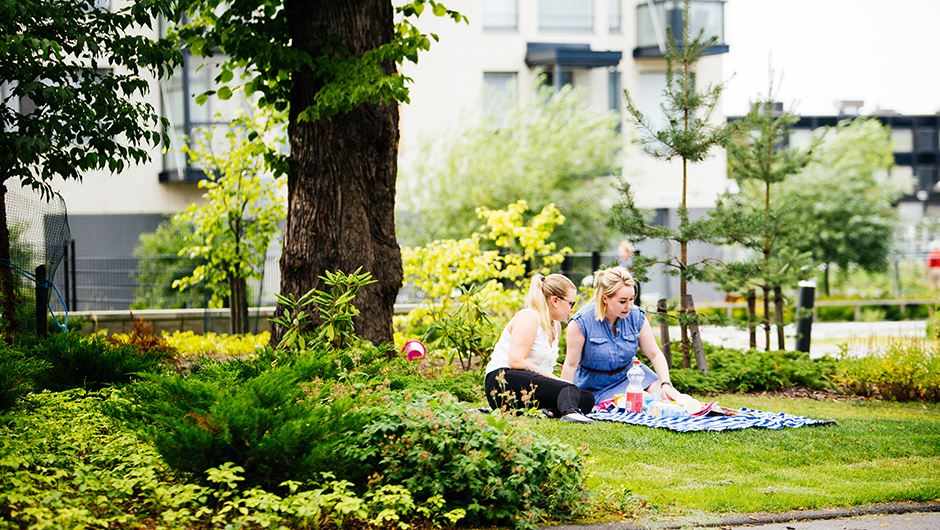Sustainable data centers as a service
- Traffic
- City
- Construction
- Sustainability
- 9/12/2022
Did you know this about environmental construction?
Environmental construction means construction that maintains environmental values and construction processes that repair environmental damage that humans have caused. As a practical example, environmental construction can refer to the entire life cycle of a green project, from planning to building to maintenance.

Why is environmental construction important?
Environmental construction maintains and accounts for a construction project’s existing environmental values and compensates for the negative impacts of construction by building and renovating living environments. Comfortable living environments increase the well-being of people. They also sequester carbon dioxide and make rainwater management easier.
Who carries out environmental construction?
In Finland, environmental construction is carried out by both large and small operators. Project sizes also vary. A smaller project can be commissioned by individuals, while larger projects can be commissioned by companies or the public sector.
What types of projects is environmental construction related to?
Environmental construction is related to almost all types of construction projects. Some good examples include building construction, road and rail construction and water works. Environmental construction is a visible part of each project that increases comfort.
Does environmental construction only happen in cities?
Environmental construction is carried out in cities and in sparsely populated areas. Urban areas have the most environmental construction projects, since urban areas generally have lots of construction. In sparsely populated areas, environmental construction is carried out as part of road projects and different landscape projects, for example.
Did environmental construction only start recently?
Environmental construction has recently become more important. Global concern about the planet’s condition has opened people’s eyes and made us value the well-being of the environment. We have also recognised how important nature is for the well-being of people.
How do we know where and when we need environmental construction?
Before construction begins, areas are surveyed and their current status is investigated. For example, soil contamination studies provide information about what should be taken into account in construction. This helps us better plan what to do and when.
What kinds of studies and monitoring are carried out?
Studies are planned on the basis of what an area was previously used for and on the environment. Studies that are conducted include soil contamination studies, groundwater studies, sulphate soil surveys, noise assessments, stormwater surveys and different surveys concerning damaging invasive alien species. Permits are acquired from the relevant authorities, and monitoring and follow-ups are performed according to the area.
Who pays for environmental construction?
Environmental construction is primarily paid for by the client. However, the project’s positive impact on the well-being of nature and people is often more important than the money.
Who is responsible for the results of environmental construction?
The parties responsible for the results of environmental construction are the client, the designer and the builder, according to their areas of responsibility.
How are results measured?
Different follow-ups are used to measure whether compensation or restoration procedures have been successful. Depending on the construction project, there will be surveys concerning the flora and fauna in the area, noise assessments and soil and groundwater samples.
How can citizens influence matters?
During the planning stage of environmental construction, there are often events for citizens where they can influence the project. This is the case for public projects, for example. In large projects such as the Jokeri Light Rail, various events have been organised for residents at different stages of construction as well. During the maintenance stage, there may be events, such as invasive alien species work, where citizens can participate in maintaining biodiversity.
Environmental construction emphasises biodiversity
Construction of green areas and stone construction
Read more about YIT’s environmental construction projects
The Jokeri Light Rail in the Helsinki metropolitan area
Mall of Tripla’s green roofs



